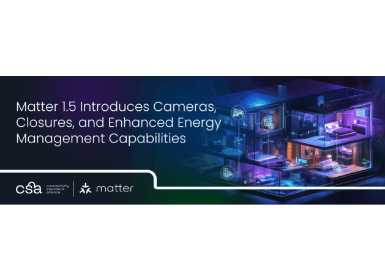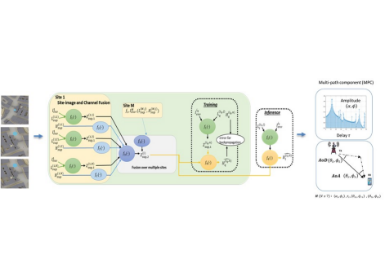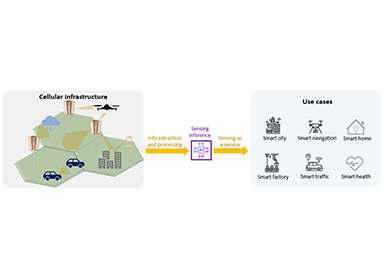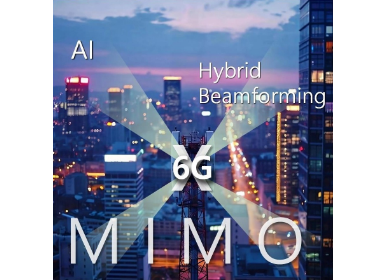Communications
CSA Releases Matter 1.2 Specification and SDK for Smart Home IoT Standardization
Background

Figure 1. Matter smart home
Matter is a simple, interoperable, reliable, and secure standard intended to harmonize proximal connectivity within (initially) the residential IoT. The first Matter 1.0 specification was launched by the Connectivity Standards Alliance (CSA) in October 2022, backed by major companies in this space including Samsung Electronics, Amazon, Apple, Google, and others.
The Matter program encompasses a full protocol specification, built on IPv6, which supports device discovery, provisioning, and control, all over secured interfaces. Additionally, there is an open-source SDK that supports all of the functions necessary to certify a Matter device, and a certification program with an automated test harness and test cases.
In this post, we explore more on the market penetration of Matter enabled products, the certification program that underpins these products, and what is new in the latest Matter 1.2 release that was launched in Oct 23, 2023.
Matter in the Market
Since its launch, the Matter 1.0 and subsequent 1.1 specification has been implemented, certified, and commercialized in over a thousand devices produced by CSA member companies. The major ecosystems (including Samsung SmartThings) all provide the ability to commission and control Matter devices via their apps and controllers, all of which are also subject to certification and other testing to ensure interoperability.
Matter 1.0 device types include lighting, smart locks, switches, sensors, and bridges to other technologies (allowing legacy devices to be represented as Matter devices).
Matter 1.1 added no new device types, but saw improved support for sleepy devices (battery powered) and improved tooling and support for developers, plus more extensive test automation that assists companies certifying devices.
Examples of Matter enabled products in the marketplace include the Essentials lighting range from Nanoleaf, Philips Hue lighting, smart plugs and sensors from Eve, bridges from Aqara, and many more.
Matter Certification
Certification Program Background

Figure 2. Matter logo
Like other connectivity standards, Matter has its own certification program. The major benefits of the Matter certification program are the assurance of Matter specification conformity, device interoperability, IP protection, and confirmation of the ability to use the Matter logo.
Matter Certification Process Overview
Here is a short introduction to the Matter product certification process.

Figure 3. Matter certification process
In order to certify a product as a Matter product, a company must first be a CSA member, the company will also have a CSA provided unique vendor identity (VID), used in device identity, and other places. As the consumer experience with a Matter device is dependent also on the connectivity that it may use, Matter requires that the transport layer be certified by the appropriate body. This covers the use of Wi-Fi, Thread, and Bluetooth.
Product certification testing is mostly automated, using a CSA developed Matter Test Harness. The certification test cases are based on the device vendor's declaration of the Matter features supported by the candidate device. Certification testing is performed by an authorized testing lab, and test execution can be automated or manually performed according to the Matter Test Harness capability. Upon a successful test result and documentation review, Matter certification will be granted to the candidate device along with a CD (Certification Declaration) and inclusions in the DCL (Distributed Conformance Ledger) registry. Through use of the DCL, these certification credentials can be validated by a commissioner (like the SmartThings App) during the Matter device onboarding process.
Certification Program Evolution
As the Matter specification continuously evolves with new features and new device type additions, the certification program also evolves along with these updates. Besides adding more test cases and broadening automation coverage in the Test Harness, other upgrade efforts are in progress such as building flexible test scripts and reducing test configuration complexity.
Matter certification program enhancement and evolution goes beyond these technical aspects of certification process. The program is introducing various new Matter certification policies to help manufactures lower the barrier of product market introduction and certification cost burden. A manufacturer introducing a new product similar to their existing certified product may not need to go through device testing requirement but only exercises a paper registration process. A family of products with minor hardware form factor variations can be handled by a simple registration process of listing all family products under one certification. For some qualified members, recertification testing and reporting can be conducted by the member themselves instead of visiting an authorized testing lab.
The Matter certification program has been evolving through collaborative efforts and contributions among members, thus, the program will proceed hand in hand with future Matter specification and SDK development. This collaborative approach will continue to help improve the Matter technology, and build user trust and market success.
What is Now Possible with Matter 1.2?
Deeper Dive into Semantic Labels
Consider, for example, the case where your Matter client is interacting with a multiport power strip.

Figure 4. Needs for semantic labeling
From the perspective of a client, and the user experience it is providing, how does it know which of the power sockets is which, and how this would be reasonably presented to a user? The answer lies in the introduction of the semantic labeling concept in Matter 1.2.
A semantic label is a specification defined, name-spaced, data model element that provides additional semantic information with regard to the device with which the client is interacting. The concept is primarily designed to disambiguate cases such as the use case described. In this instance, each power socket could be labeled with the defined values {left, middle, right} by the device vendor. Note that this isn't user defined labeling, but device manufacturer defined labeling.
Deeper Dive into Device Composition
Matter 1.2 sees the introduction of device types that are more complex in nature than those that are part of Matter 1.0. In order to better allow for these to be modeled using the Matter data model, and well understood with a good user experience presented by a client, the concept of hierarchical device composition has been introduced.
Device composition allows a device to be "composed" of other devices. The example below shows the case of a fairly standard Refrigerator with two compartments or cabinets. One cabinet refrigerates, the other freezes. To allow for this and extensibility to many more cabinets, a Refrigerator device type is always composed of one or more Temperature Controlled Cabinets. Each of these is disambiguated by using the aforementioned semantic labelling feature.

Figure 5. Device composition example using semantic labeling
One can visualize how this can be extended to an Air Purifier with multiple Air Quality Sensors, or a Lighting fixture with primary and secondary lighting elements.
Deeper Dive into Matter 1.2 Device Types
Matter 1.2 sees a broadening of the device types that are covered by the specification. The new device types are summarized in the following list:
- White Goods (Appliances): Refrigerator, Room Air Conditioner, Laundry Washer, Dishwasher
- Air Quality Control: Air Purifier, Air Quality Monitors/Sensors, Fans
- Robot Vacuums: Robotic Vacuum Cleaners (dry and mop)
- Smoke & CO Detection: Smoke/CO Sensor
For each of the new device types Matter supports the ability to either control the device, or query the status of the device, or receive notifications or alarms on the change of status of the device or any of its attributes as appropriate.
Conclusion and Next Steps
Matter 1.2 sees the addition of fundamental enhancements to modeling capability to allow for support of more complex devices. Matter 1.2 also defines new device types, extending the set of devices for which Matter enables interoperability across IoT ecosystems.
Moving forwards, Matter will continue to provide enhancements to the current feature set, improving the user's ownership experience, and broader support for value-added services such as Energy Management, Secure Video, and so forth. Expect to see such enhancements on a 6-monthly release cadence.
Samsung Research is an active participant in the development of the Matter specifications in this exciting time for the IoT. The continued evolution and adoption of Matter will further enrich user experience for the IoT "things", with the ability to access those "things" from their ecosystem(s) of choice including most importantly SmartThings controllers and commissioners
Going forward to Matter 1.3 and beyond, we expect to see further enhancements with respect to:
√ Additional device types that are supported
√ Extensions into additional use cases to provide a more holistic experience
√ Continuous enhancements to the Matter framework and underlying ecosystem
References and Further Information
Here are some further resources on Matter:
Official Matter 1.2 announcement:
Matter introduction at the CSA website:
• https://csa-iot.org/all-solutions/matter/
Security and Privacy One Pager:
• https://csa-iot.org/developer-resource/matter-security-and-privacy-one-pager/
SmartThings and Matter Presentation at SDC 2023:
• https://www.samsungdeveloperconference.com/sessions/smartthings-and-matter
Developer resources at the CSA:
• https://csa-iot.org/resources/developer-resources/
And of course, the Matter SDK:






